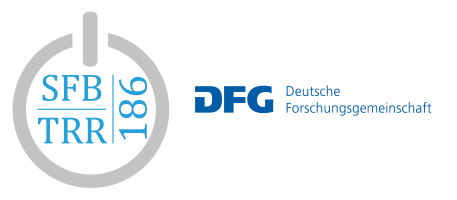Neurotransmitter release: Spatio-temporal characterization of membrane fusion intermediates.
During the rapid presynaptic neurotransmitter release, the SNARE complex-based release machinery switches
from a fusion ready, but “clamped” state of synaptic vesicles, to a highly fusogenic state that mediates fusion
within a fraction of a millisecond. This process is regulated by a series of SNARE complex associated proteins
that exert both clamping and fusion promoting functions. Interestingly, members of these protein families
display differential expression in the nervous system associated with synapses that vary in their release speed
and efficiency, and in their ability to clamp spontaneous release, suggesting that these proteins tune the
switching behavior of the release apparatus in a manner driven by the physiological context of individual
synaptic connections. Understanding the underlying molecular mechanisms of these switch modulators is
therefore critical in understanding how synapses operate in the nervous system. In the upcoming funding
period, the A04 project examines members of two functionally distinct classes of switch modulators of
neurotransmitter release (Complexin 1/2 vs -3/4 and Doc2a vs. Doc2b) at the level of in vitro reconstitution of
docking/fusion assays (Söllner) and in native synapses using synaptic transmission analysis (Rosenmund).
Our general workflow involves establishing important molecular features of the switch modulators in the
functional in vitro assays responsible for both general functions, as well as in functions that may differ between
protein family members. Then we will use this information to identify the impact of key mutations and isoform
differences in native environments using electrophysiological recordings from genetically modified culture
neurons. These studies will provide new insights into the mechanism and dynamics of release modulators -
the functional properties of their domains and their distinct molecular rearrangements at different stages of the
membrane fusion process.
Prof. Dr. Thomas Söllner (BZH Heidelberg)
Prof. Dr. Christian Rosenmund (Charité Berlin)
